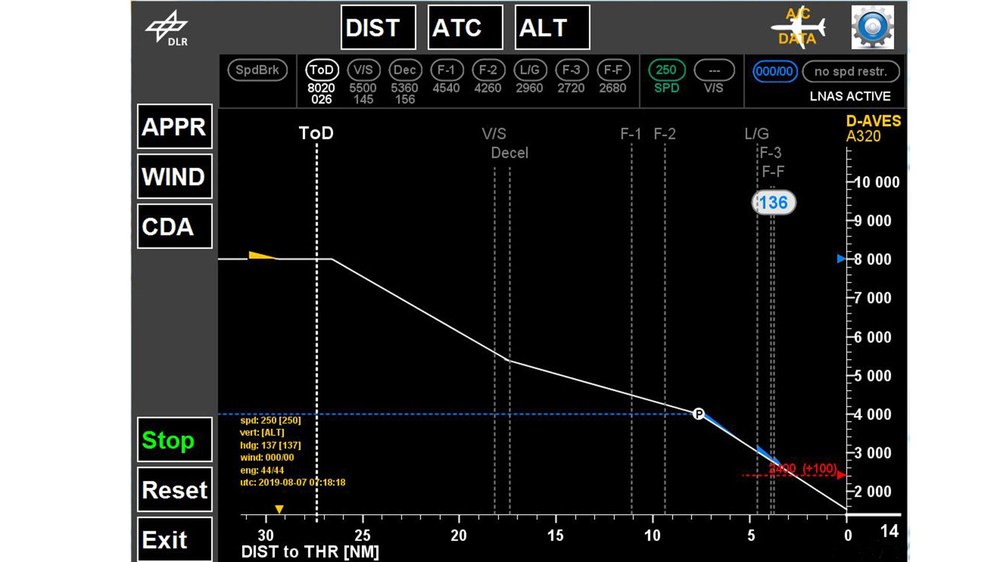Energy-Optimised Flying
Greenhouse gas emissions and aircraft noise are among the most pressing challenges in aviation. With practical system solutions like LNAS and ADO, the Institute of Flight Systems demonstrates how technological innovation can contribute to more resource-efficient and quieter flight operations.
The Low Noise Augmentation System (LNAS)
The Low Noise Augmentation System (LNAS) is an innovative assistance system that supports pilots in conducting quieter and more fuel-efficient approaches. Developed by the Institute of Flight Systems, LNAS combines precise planning and real-time adjustments of the vertical approach trajectory with an intuitive energy-based display that interfaces with the pilots to provide corresponding guidance and recommended actions.
The system minimises thrust usage during approach and optimises the timing for deploying flaps and landing gear. This significantly reduces fuel consumption and noise exposure. Field trials at airports such as Frankfurt and Zurich have demonstrated fuel savings of up to 6 percent and local noise reductions of up to 2.5 dB.
LNAS has been successfully integrated into more than 200 Lufthansa aircraft and is being continuously refined, including within SESAR projects such as ALBATROSS and DYN-MARS. It exemplifies the institute’s forward-looking approaches to trajectory optimisation and sustainable aviation.
The next step: ADO – Aircraft Departure Optimizer
Following the successful development of LNAS for quieter approaches, the Institute of Flight Systems is now exploring a comparable solution for departures with ADO. Since approach and departure phases differ significantly in terms of procedure, duration, and noise characteristics, ADO takes a different approach: while LNAS assists the cockpit crew during flight, ADO is used exclusively during pre-flight preparation.
The system helps select a customised vertical departure profile with optimised altitudes for thrust reduction and acceleration. The aim is to reduce noise in a targeted way and better adapt it to the residential structure surrounding airports. This is based on flight simulations, noise modelling, and detailed data on population and topography.
Since the initial concept developed during the FluiD-21 project (2020), ADO has been continuously enhanced. Within the D-KULT project, the software was integrated into electronic flight bags, tested with airlines in simulators, and prepared for use in actual flights.
LNAS and ADO are outstanding examples of the institute’s innovative work in trajectory optimisation – all with the goal of making air traffic more sustainable.



